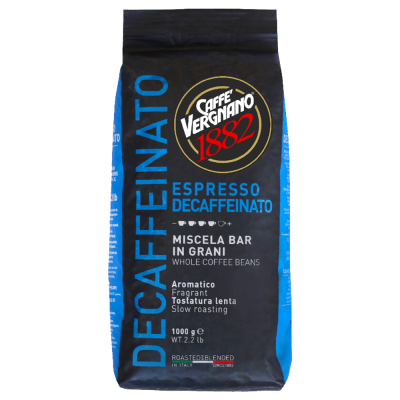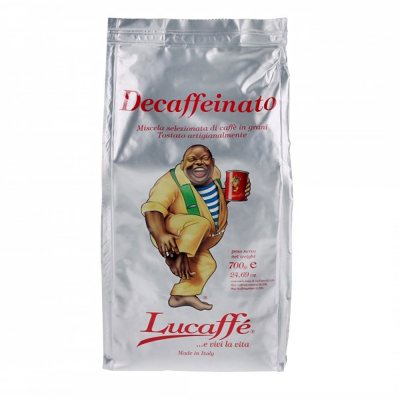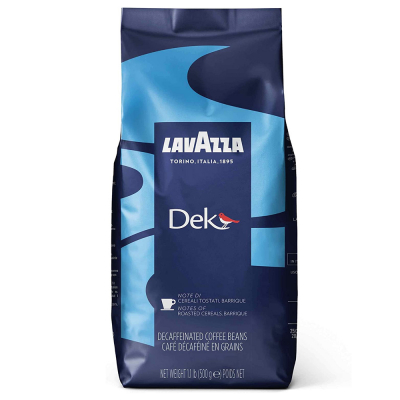Espresso coffee

- Caffè Vergnano 1882 Decaffeinato Espresso - coffee beans - 1 kiloFloral, Chocolate Strong (3/4)As low as 12,9513.22 / kg
- Lavazza Dek (Decaffeinato) - Decaffeinated coffee beans - 500gHerbs Medium (2/4)As low as 8,3617.80 / kg
Espresso coffee
Coffee is among the most widely consumed beverage in the world. Coffee is tasty and there are many varieties to choose from. In addition, coffee drinkers get a boost because it contains caffeine. Coffee is always made from coffee beans. Whatever type of coffee you take, the bean always forms the beginning of your cup. People who like convenience tend to take filter coffee from already ground coffee beans. For convenience, some people choose to brew single-serve coffee using a cup or pad. But if you want good quality coffee, the advice is to take fresh coffee beans and let your coffee machine grind them. This allows all the flavours and aromas of the freshly ground coffee bean to come together in your cup of coffee. The basis for many different types of coffee is espresso.
Espresso coffee is one of the most popular coffee drinks in the world. With its strong and intense flavour, it is no surprise that espresso coffee is a favourite among coffee lovers. Espresso is made by pressing hot water under high pressure through finely ground coffee, resulting in a small but powerful shot of coffee with an intense flavour. For those looking for even more intensity and caffeine, there is the double espresso, where two shots of espresso are combined into a single drink. There is no doubt that classic espresso and double espresso hold an important place in coffee culture, whether you are a fan of the classic variant or need an extra kick.
How did espresso coffee come into being?
Around 1820, the first coffee machine was invented that could brew large quantities of coffee. Only modern technology did not exist at that time, so the water was mixed with the coffee by filtering it through the machine under high steam pressure. There was a slight drawback: the ground coffee was burnt by the steam pressure, giving it a tremendously bitter taste. Steam always gets hotter than 100° Celsius, while an ideal espresso coffee should be brewed at a temperature of up to 95° Celsius. But this disadvantage outweighed the new technical possibilities of a coffee machine, as you could cancel out the bitter taste by adding quite a bit of sugar. The technology of steam pressure was continued for whole water years, including the unpleasant coffee taste, until Italian inventor Luigi Bezzera invented a new machine, still on steam pressure but with a different operation, so that the coffee no longer came into contact with the steam. It was also now possible to make coffee per cup, also called express or in Latin exprimere, meaning squeeze or squeeze. From this name, then, espresso was officially derived. From that time on, especially in Italy, many different types of coffee factories arose, each with its own espresso, but still with steam-pressure machines. Until Professor Illy, in 1938, introduced a new machine based on air pressure. The basis of this machine still serves today, although it has been significantly modernised in recent years, and today such machines work through electricity.
How is espresso coffee drunk?
Espresso coffee can be seen as the national drink of Italy, which is why many derivatives of espresso coffee have Italian names. In Italy, by the way, people call this coffee very simply caffè. People drink it already in the morning and continue with it until late in the evening. This can be caffè, but often a derivative, such as cappuccino. For a good espresso coffee, you use an espresso cup. This is a small cup that is sometimes difficult to hold with two fingers. You need to preheat this cup. And then, in the right way, under the right pressure and temperature, the coffee should come in. When this is the case, it may truly be called espresso coffee. The espresso coffee should be black, hot and preferably with a few scoops of sugar to make it sweet. This is the correct way. Now taste can vary, so one person will take it with sugar while someone else will not. Buying an espresso made the right way ensures you get the real Italy feeling inside.
Variations of espresso coffee
Not everyone likes espresso coffee, as it is too strong and spicy for many. A lot of people prefer coffee with milk. This is because milk softens any bitter taste of coffee. This is why espresso coffee has been made in different varieties, some without milk or foam and some with milk or foam, but always based on espresso coffee:
Caffè doppio
The doppio is nothing more than an espresso coffee, but double. Since the amount of espresso coffee for one cup is not that much, some will appreciate the doppio more.
Caffè lungo
This espresso coffee uses more water and can be compared to the coffee we are used to. The coffee will be less strong, but you will have more coffee.
Caffè corretto
Translated, this is corrected coffee. With this comes a little liquor such as grappa, sambuca or brandy. In the north of Italy it is quite common to use grappa, while in the south people add anice to their coffee.
Caffè ristretto
Unlike the lungo, not more but less water is used, this gives the espresso coffee a stronger flavour.
Caffè americano
If the caffè lungo is not enough like the coffee we are used to, try the americano. Some extra hot water is added to the espresso coffee. Actually, this coffee is now very similar to our filter coffee.
Caffè Macchiato
This coffee consists of a layer of espresso coffee topped with a dash of hot milk, topped with a layer of frothed milk. This coffee should preferably be served in a glass, so you can clearly see the layers. The Dutch meaning for this coffee is 'spotted coffee'.
Cappuccino
Surely this coffee can be called the most popular among the Dutch, but in Italy, too, the cappuccino is popular to drink especially in the morning. A cappuccino consists of equal parts espresso coffee, steamed milk and milk foam, often with a garnish of cocoa powder or cinnamon.
Caffè latte
This is espresso coffee with hot milk, where the amount of milk is more than the coffee. This is also the coffee that professional baristas create entire works of art in. With a Caffè latte, it is important to first pour the coffee into the cup and then add the hot milk.
Latte macchiato
Not to be confused with caffè macchiato, as this does not involve frothed milk, but only hot milk. One difference with Caffè latte is that with this coffee, the hot milk is poured first and then the espresso coffee. The milk is the most important part.
Buy espresso
So, do you want to make good espresso coffee yourself or any of the above variants? Then you cannot avoid visiting the Café du jour website, where you can order special coffee beans for a delicious cup of espresso coffee.













